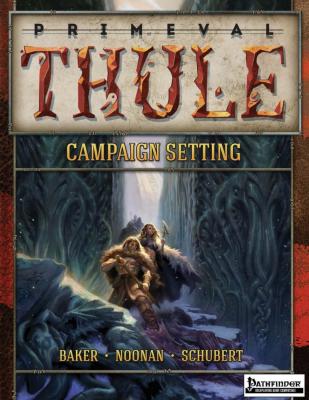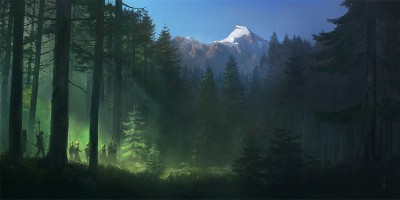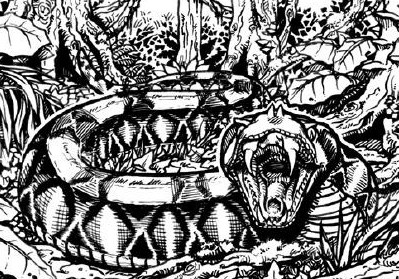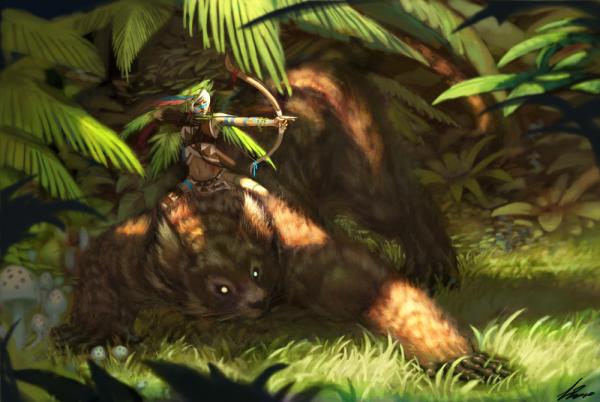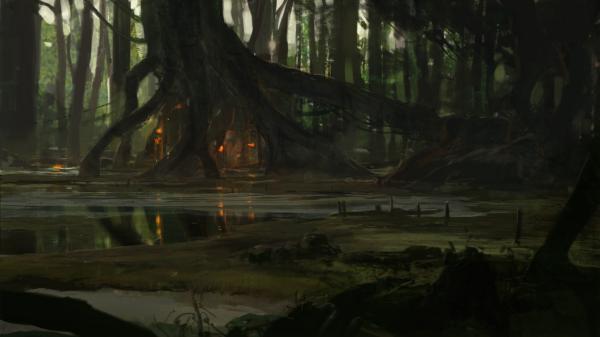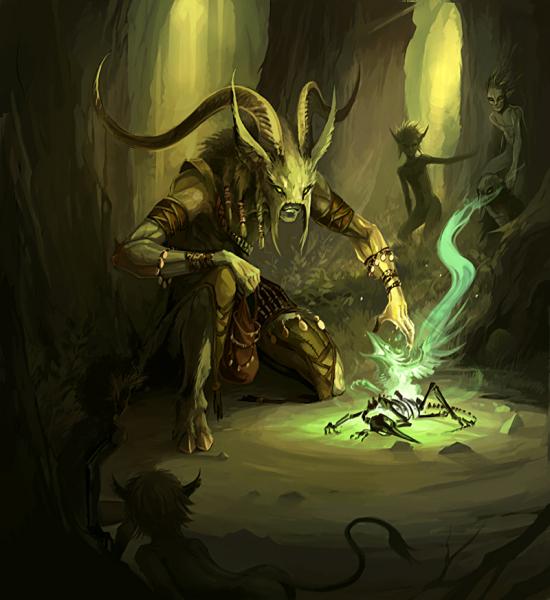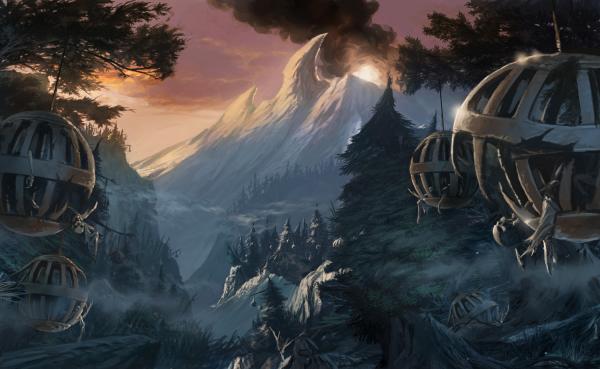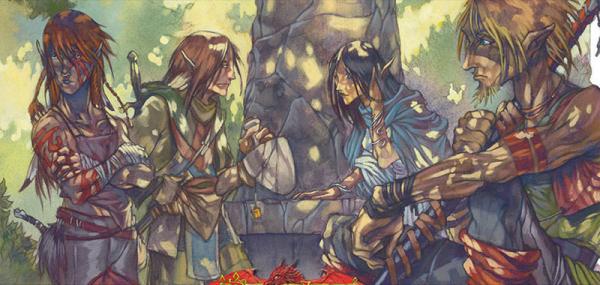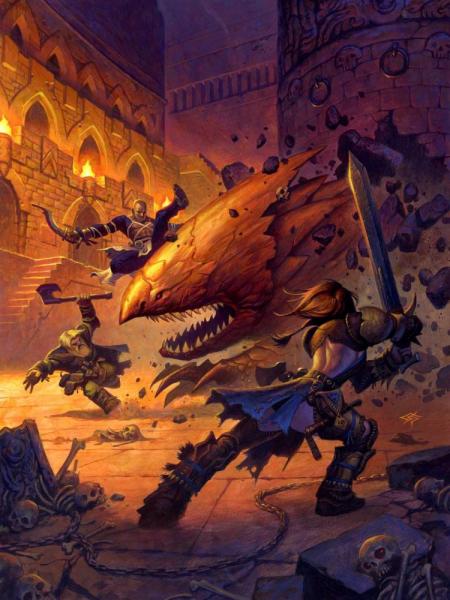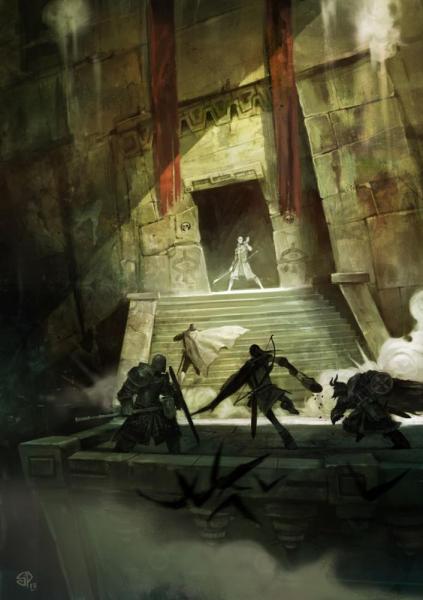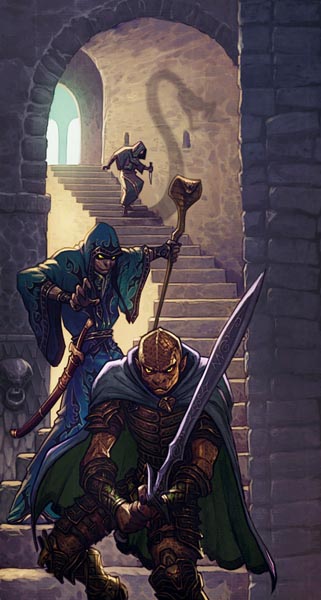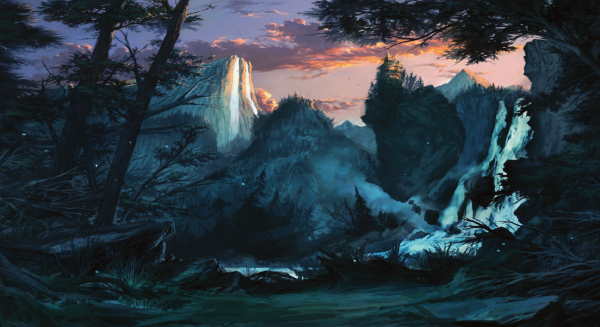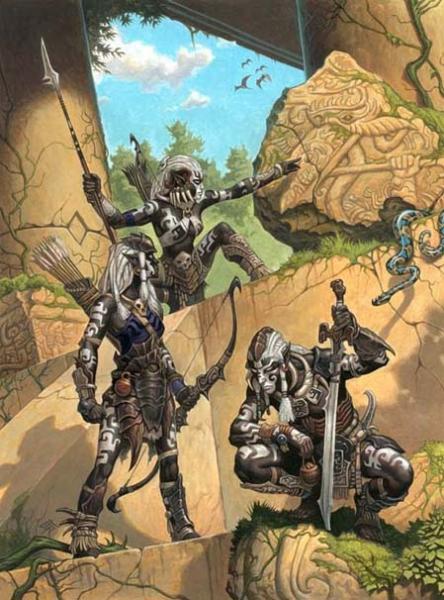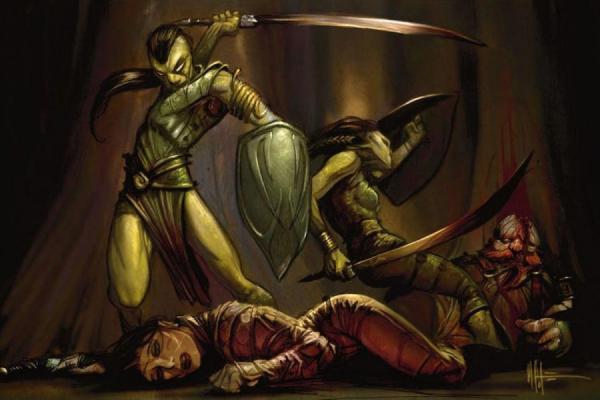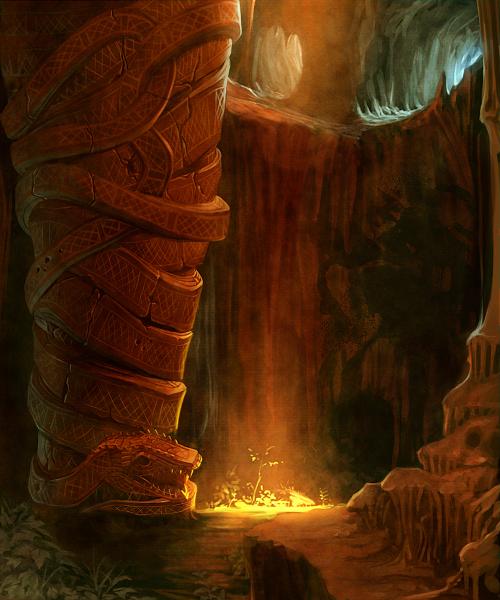I am not usually someone who does any kind of accounting for fun, so dealing with treasure and equipment generally is done very quick and simple in my campaigns.
The encumbrance system is almost taken directly from the one created by LS at Papers and Pencils, which I really like. (Yes, when you post mechanics on your website, sometimes there will actually be people using it.) The treasure system is my own creation, as far as I can recall. It’s a slight variant of the one I came up with for tying character advancement to loot in Barbarians of Lemuria.
Encumbrance
Encumbrance works very simple. All items have a weight of either 1, or 2, or none. Characters can carry a number of items equal to their Strength score with no penalty. They can carry a number of items equal to twice their Strength score while being lightly encumbred, and up to three times their Strength score while being heavily encumbred.
Characters who are lightly encumbred have their movement speed reduced by one category and have all the penalties for wearing medium armor. (Limits to using certain skills and spell point cost for casting spells.)
Characters who are heavily encumbred have their movement speed reduced by two categories and have all the penalties for wearing heavy armor.
If an object is so large and heavy that it would take both hands to hold and carry, it counts as two normal items and has a weight of 2. Objects lighter than a dagger are not counted towards encumbrance. It’s left to the GM to decide when a larger number of smaller objects counts as one item. A pound or half a kilo of stuff probably is a good limit.
As they are likely to come up often, a quiver with 12 arrows, food for one day, and water for one day should all be treated as having a weight of 1 each, regardless of how they are stored.
To track encumbrance, a good idea is to have an inventory list in which all the rows are numbered. You can then mark at which row the limits for light encumbrance, heavy encumbrance, and maximal load are reached, based on your character’s Strength. For items with weights greater than 1, simply cross out the line below it. When you get over any of those limits, you simply see it immediately as the list passes over the marked lines.
Treasure
The standard unit of wealth is “1 treasure”. A treasure could be many things, but generaly has a weight and a value of 1. A small bag of silver coins being the standard example. But it could also be jewelry, gemstones, golden cups, or whatever. For special occasions you can also have special treasures which weigh nothing or have a value greater than 1. The huge diamond from the crown of the high priest may easily have a value of 5 or 10, while a gold ring with a saphire might have a weight of none. But these are not usually found lying around in ruins or in the pockets of bandits.
There are no price lists. As long as you have at least one treasure with you, you can get whatever weapons, shields, food, rooms, and other small expanses you want. If you have no treasure with you, you’re broke and have to either get some valuables somewhere or get creative in acquiring equipment and supplies. Greater expanses usually cost 1 treasure. It could be a mount, a lavish feast, a cart, or other mundane but expensive things. Armor is more expensive and costs 1 treasure per point of Armor Class bonus (an AC +4 armor would cost 4 treasures).
Magic potions also generally cost 1 treasure each and are probably one of the most common expenses. More powerful magic items don’t come with a fixed price. They are almost always given as rewards, taken from defeated enemies, or stolen from treasure vaults.

